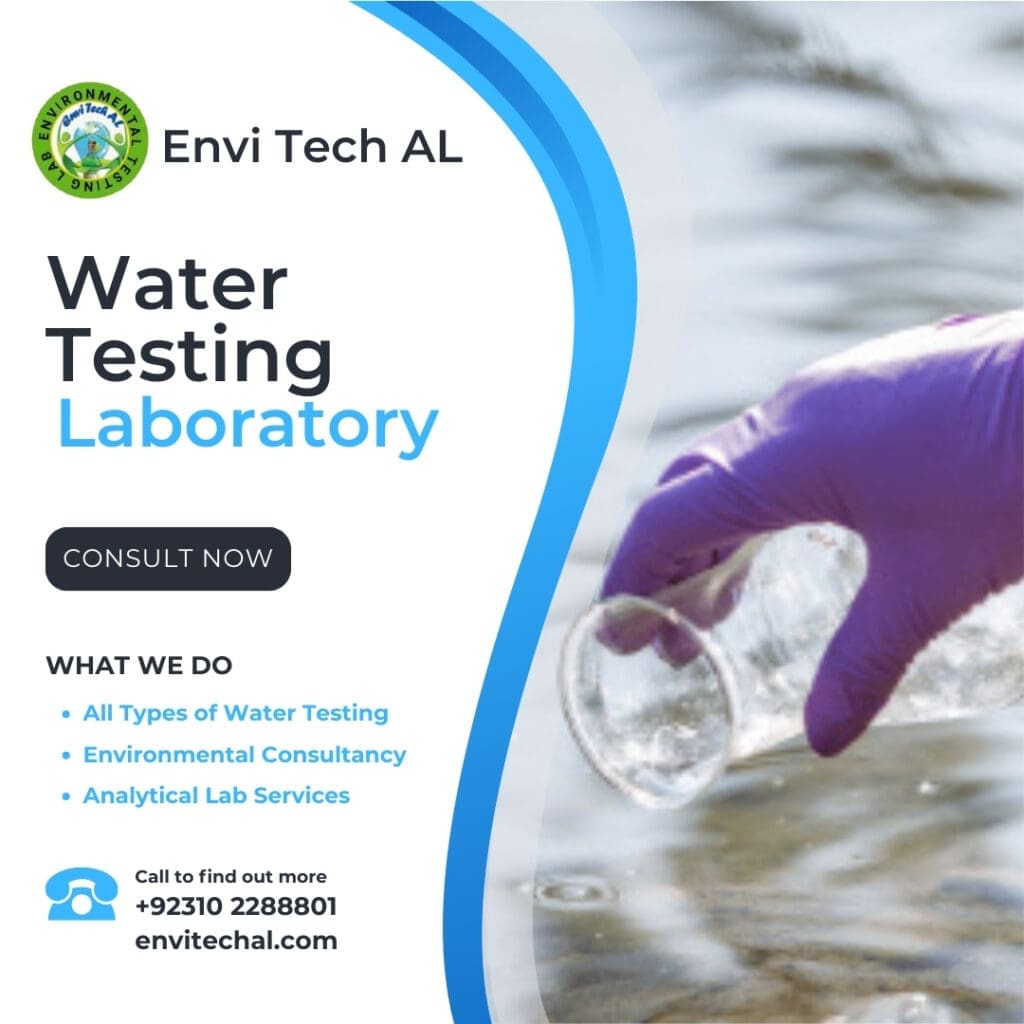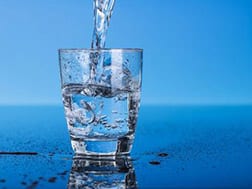Discover What Is Consisted Of in Water Testing and Exactly How It Makes Sure Safe Drinking Water
Comprehending the ins and outs of water screening is pivotal in guaranteeing the high quality and safety and security of our alcohol consumption water. Through a careful examination of physical, chemical, and microbiological facets, water screening identifies possible contaminants that might present health and wellness risks. From the presence of heavy metals to damaging microorganisms, each test part plays a critical role in maintaining the honesty of our supply of water. Advanced techniques like chromatography and spectrometry boost the precision of these analyses. How do these procedures translate right into the regulative structures that ensure security in our daily intake?
Secret Components of Water Testing
Water testing is an essential procedure that involves a number of vital elements to guarantee the security and top quality of drinking water. One of the main components is the analysis of physical characteristics, consisting of smell, color, and turbidity. These features can supply preliminary insights into the water's condition and possible contamination resources. Additionally, making sure the pH equilibrium of water is important, as it influences the water's corrosiveness and the efficacy of disinfection processes.
An additional substantial part involves microbiological analysis, where water samples are examined for the existence of bacteria such as germs, infections, and protozoa. If eaten, this analysis is vital to identify biological hazards that could present health and wellness threats. Additionally, chemical evaluations are carried out to identify organic and inorganic materials, such as heavy metals, nitrates, and chemicals, that could be existing in the water.

Finding Hazardous Impurities
Identifying harmful contaminants in alcohol consumption water is a basic facet of protecting public health. Each kind of pollutant presents distinctive health and wellness threats, making their discovery essential to make certain the water consumed by the public is safe.
Water screening for contaminants is generally conducted by regulatory companies and water utilities, employing a mix of field sampling and lab analysis. These analyses are made to identify both normally occurring compounds and anthropogenic contaminants that may have gone into the water with farming drainage, industrial discharge, or maturing infrastructure. Routine surveillance is important, as contamination degrees can vary due to environmental adjustments, seasonal variations, or human tasks.
The recognition of damaging impurities informs needed actions, such as water therapy interventions or public advisories, to reduce threats. Early detection is crucial to avoid unfavorable health and wellness effects, varying from stomach health problems to lasting conditions like cancer cells, consequently making certain the proceeded safety and security of drinking water.

Chemical Evaluation Strategies
In the world of guaranteeing secure drinking water, chemical analysis strategies play a pivotal function in identifying and quantifying pollutants. These techniques are essential for identifying a wide variety of chemical substances, including hefty steels, chemicals, and commercial pollutants, which can position considerable health and wellness risks. Strategies such as atomic absorption spectroscopy (AAS) and inductively paired plasma mass spectrometry (ICP-MS) are frequently used to determine trace levels of metals like lead, mercury, and arsenic. These instruments give exact quantification, helping with conformity with regulative requirements.
Gas chromatography-mass spectrometry (GC-MS) is one more important technique, specifically for organic compounds. It divides complex mixes and identifies semi-volatile and unpredictable natural substances, making sure that contaminants like benzene and toluene are within secure restrictions. High-performance fluid chromatography (HPLC) is likewise utilized for non-volatile materials, including certain chemicals and pharmaceuticals.
Ion chromatography is utilized to determine focus of anions and cations, such as nitrates and sulfates, which are critical in assessing water top quality. These chemical evaluation methods collectively ensure that alcohol consumption water remains secure by spotting inconsistencies from developed purity standards, consequently guarding public health and wellness. Ensuring accuracy and accuracy in these examinations is extremely important to maintaining the integrity of water safety analyses.
Microbiological Examining Approaches
Precise microbiological testing is critical for protecting public health by making certain that alcohol consumption here are the findings water is totally free from dangerous microorganisms. This process involves identifying and mentioning microbes such as bacteria, viruses, and protozoa that may contaminate water products. Common microorganisms include Escherichia coli, Giardia, and Cryptosporidium, each posturing significant health threats.
Several techniques are utilized in microbiological testing to identify these threats. The membrane purification strategy is frequently made use of, including water going through a filter that records germs, which are after that cultured to identify their presence and concentration. Additionally, the multiple-tube fermentation approach makes it possible for the metrology of coliform microorganisms using a collection of dilution and incubation steps.
Innovations in innovation have actually introduced molecular methods such as polymerase domino effect (PCR), which enables the extremely specific and rapid discovery of virus by amplifying their genetic material. Enzyme-linked immunosorbent assays (ELISA) also supply a method to identify virus by determining details proteins or antigens.
These varied approaches are crucial for thorough water quality assessment, making certain that water therapy processes are efficient and that circulation systems keep security. By utilizing these microbiological screening techniques, potential carcinogen can be recognized and minimized quickly.

Importance for Public Health And Wellness
Ensuring the microbiological safety and security of alcohol consumption water straight affects public health and wellness by stopping the spread of waterborne illness. Microorganisms such as bacteria, viruses, and protozoa can result in health problems like cholera, dysentery, and gastrointestinal infections (Water Testing Service). The application of comprehensive water screening methods is paramount in identifying and mitigating these threats, hence protecting areas from browse around this web-site potential episodes
Routine water screening not only finds microbial impurities yet likewise examines chemical and physical parameters that could affect wellness. Extreme levels of nitrates or heavy steels such as lead can position major wellness dangers, especially to at risk populaces like babies and pregnant women. By recognizing these threats early, water screening enables timely interventions, making sure the water supply remains within safe consumption criteria.
Moreover, water screening plays a critical role in maintaining public self-confidence in metropolitan water systems. For plan manufacturers and health and wellness officials, the data obtained from water screening educates decisions on infrastructure financial investments and public health approaches, making certain resources are routed where they are most required.
Final Thought
Water testing functions as an essential mechanism for ensuring the safety and security and high quality of alcohol consumption water with thorough assessment of its physical, chemical, and microbiological buildings. By finding unsafe pollutants, such as heavy metals and chemicals, and making use of innovative strategies like chromatography and spectrometry, water testing facilitates the recognition of possible health and wellness threats. The application of extensive testing methods is important for maintaining compliance with safety standards, ultimately securing public health and wellness and strengthening self-confidence in local water systems.

By determining these risks early, water testing enables timely treatments, ensuring the water supply continues to be within secure this website consumption requirements.
Water testing serves as a vital device for ensuring the safety and security and top quality of alcohol consumption water via detailed assessment of its physical, chemical, and microbiological residential properties.
 Jake Lloyd Then & Now!
Jake Lloyd Then & Now! Brandy Then & Now!
Brandy Then & Now! Hailie Jade Scott Mathers Then & Now!
Hailie Jade Scott Mathers Then & Now! Meadow Walker Then & Now!
Meadow Walker Then & Now! Robin McGraw Then & Now!
Robin McGraw Then & Now!